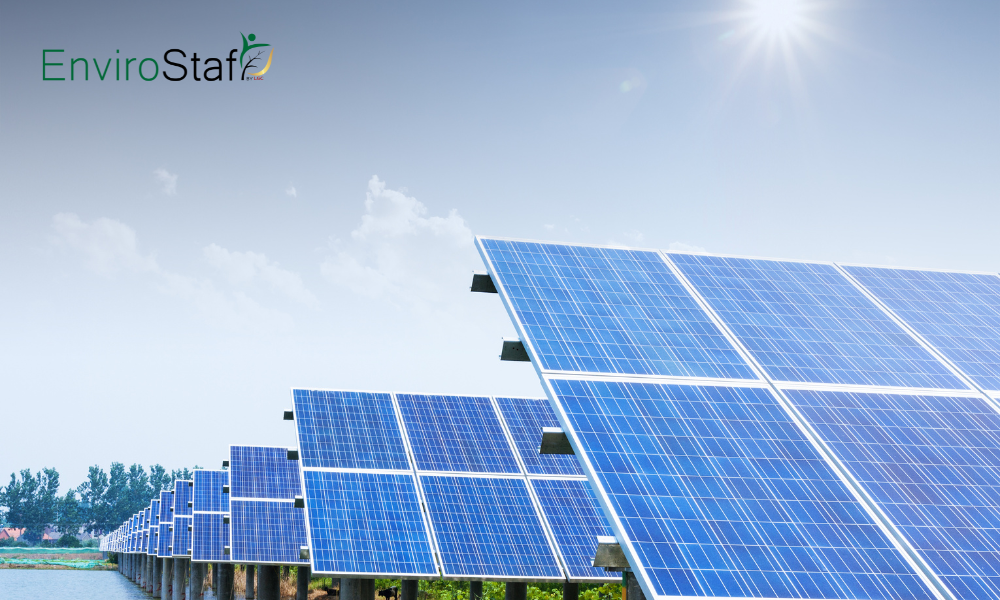As environmental jobs go, renewable electrical energy from wind and solar sources is expected to reliably power opportunities for years to come, and those trained to install and maintain the hardware will see a change in their career prospects.
Renewable Resource Use
One of the best environmental jobs you can get without a degree is in the renewable resource space. According to the US Energy Information Administration (EIA), total US energy usage in 2021 was 97.33 quadrillion (trust us, that’s a lot of zeroes) British thermal units (Btu), of which 12.16 quadrillion, or 12%, was generated by renewable sources. From renewable sources, 27% was wind, and 12% was solar.
The United States added 13.2 gigawatts (GW) of utility-scale solar capacity in 2021, an annual record and 25% more than the 10.6 GW added in 2020, according to the EIA’s Annual Electric Generator Report. Additions of utility-scale solar capacity reached a record high, despite project delays, supply chain constraints, and volatile pricing.
Small-scale solar capacity installations in the United States increased by 5.4 GW in 2021, up 23% from 2020 (4.4 GW). Most of the small-scale solar capacity added in 2021 was installed on homes. Residential installations totaled more than 3.9 GW in 2021, compared with 2.9 GW in 2020.
The U.S. wind industry installed 13,413 megawatts (MW) of new wind capacity in 2021, bringing the cumulative total to 135,886 MW. This is the second-highest amount of wind capacity installed in one year (behind 2020).
As governments continue to incentivize wind and solar power installation, and businesses and residential users add their own capacity, those tasked with installation and maintenance can look forward to being in demand.
Responsibilities + Experience
Solar photovoltaic installers assemble, implement and maintain solar panels, which convert rays from the sun into energy, on the rooftops of homes and other buildings.
According to the Bureau Labor Statistics, the median salary of a photovoltaic installer, often called PV installers, in 2021 was $47,670. A high school diploma or equivalent will get you in the door, and this occupation typically requires moderate-term, on-the-job training.
Experience in construction may shorten a new employee’s training time. For example, workers with experience as an electrician, roofer, carpenter, or laborer typically already understand and can perform basic construction duties. The transition from construction to the environmental industry can be a smooth one.
Employment of solar photovoltaic installers is projected to grow 27% over the next 10 years, much faster than the average for all occupations, with 21,700 jobs across the country.
Wind turbine installation and maintenance is expected to generate similar results for those looking for hands-on environmental jobs that have an impact on the environment by reducing the use of energy sources such as coal or oil.
Turbines have sprung up across the country in recent years, becoming part of the landscape on thousands of acres in many areas of the US. Wind turns the propeller-like blades of a turbine around a rotor, which spins a generator, which creates electricity.
As of January 2022, the US Wind Turbine Database contains more than 70,800 turbines. These turbines have all been constructed since 1980 in approximately 1,500 wind power projects spanning at least 44 states (plus Puerto Rico and Guam). Wind turbines can be built on land or offshore in large bodies of water like oceans and lakes.
Wind turbine service technicians, who require long-term training and post-secondary certification, were making a median salary of $56,200 in 2021. By 2030, the US will have 11,700 available jobs for turbine service technicians, a jump from 6,900 in 2020.
With the proper training and experience, trades people in the solar and wind industries, can be staffed just about anywhere in the United States where they are needed.
If you enjoy working in the outdoors and starting a career that doesn’t involve a college degree but will be in full demand for an energy-hungry nation more conscious of its environmental impact, these could be the places to start to find great environmental jobs.
About EnviroStaff’s Environmental Jobs
EnviroStaff is a division of LGC that focuses on making placements in the environmental industry. We build partnerships with clients to fill open environmental jobs on their team and have recruiting capabilities within multiple markets throughout the U.S. Contact us today to learn how we can help you accomplish your employment/hiring goals.

